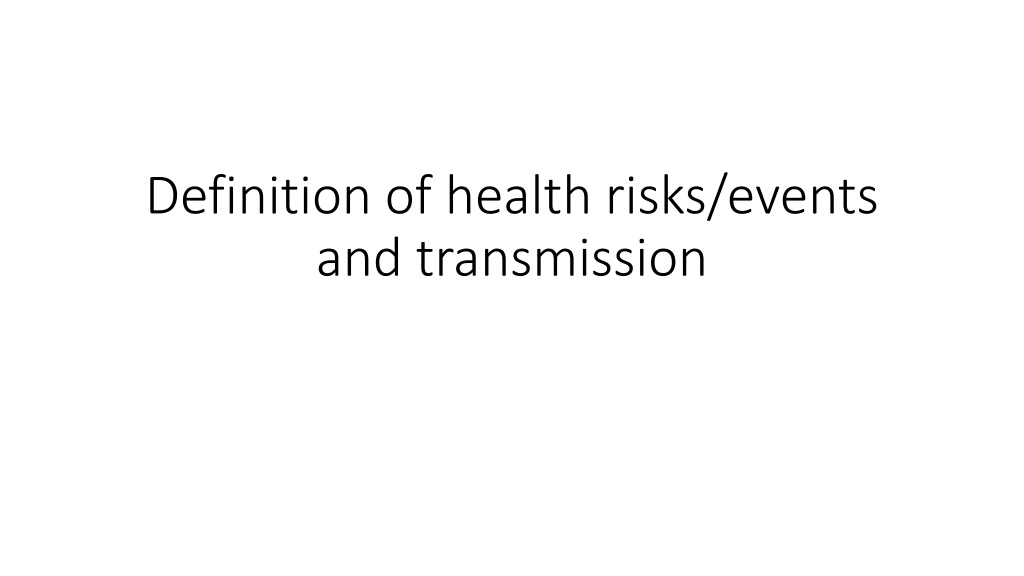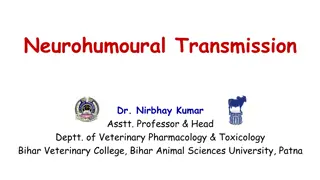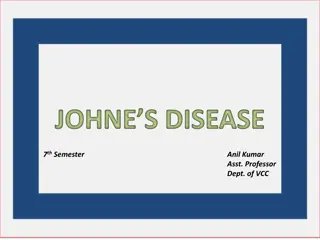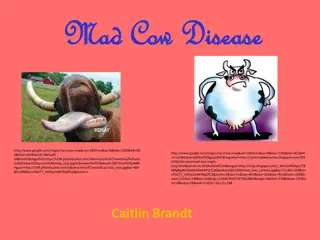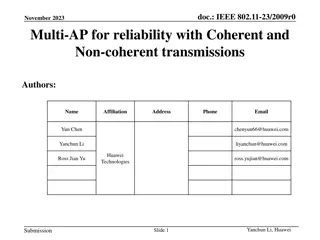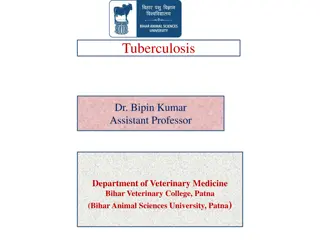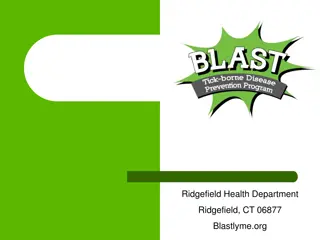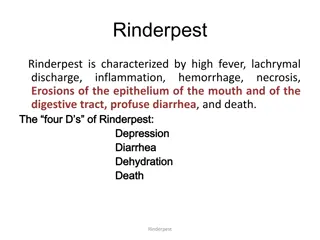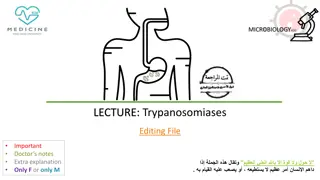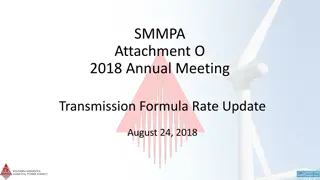Understanding Health Risks, Events, and Disease Transmission
Explore the interconnectedness between human health, animal health, and the environment while delving into how diseases spread, the infection cycle, and vulnerability to epidemics. Learn how volunteers can help prevent epidemics, recognize symptoms of health risks, and discuss why it's important to focus on health risks and events. Engage in activities like understanding disease transmission pathways and identifying vulnerable populations.
Download Presentation

Please find below an Image/Link to download the presentation.
The content on the website is provided AS IS for your information and personal use only. It may not be sold, licensed, or shared on other websites without obtaining consent from the author. Download presentation by click this link. If you encounter any issues during the download, it is possible that the publisher has removed the file from their server.
E N D
Presentation Transcript
Definition of health risks/events and transmission
Objectives By the end of this session, you will be able to: Understand how diseases can spread Understand the connection between human s health, animal s health and a healthy environment Understand the infection cycle Understand what vulnerability to epidemics are Understand how volunteers can contribute to prevent epidemics and be able to discuss why CBS volunteers look at health risks/ events rather than diseases Be able to recognize sign and symptoms related to the health risk/event relevant for the context
Infection and epidemic cycles One sick person, or one vector, can infect many people = EPIDEMIC 4
Activity: How do disease enter the body? 1. Divide in groups 2. Draw a person 3. Discuss in the groups: how/where a germ can enter a body? 4. Mark the answers on the person drawn on the paper
The spread of disease Eat & drink Wounds, insect bites Breathe Sexual contact Pregnancy & breastfeeding 8
Activity: the story of transmission
Vulnerability Some people are more vulnerable; at higher risk of contracting the infection, AND at higher risk of severe disease or death.
Activity vulnerability Category Vulnerability Why Babies Chlidren Pregnant women Healthy working people Elderly people Soldiers Farmers Factory workers HIV + people Health care workers Single parents and widows Poor
What is a health risk/event? Why do we report on health risk/events and not diseases?
Activity: how to recognize the health risk/event?
Instruction Choose the slides relevant for your training. They are divided in sections. Delete this slide before the training
Acute diarrhoeal disease 3 or more loose or liquid stools over a period of 24 hours Symptoms Possible stomach pains, fever, nausea and vomiting Can cause dehydration and death
Questions to the video How did cholera spread in the movie? How did they prevent the disease to be spread? What did the son give the father when he was sick?
Acute diarrhoeal disease Advise on: Explain how to prepare salt and sugar solution and/or give ORS (ECV action tool 9 and 10) Handwashing (ECV action tool 35) Safe food and water (ECV action tool 30 and 31) Good sanitation facilities (ECV action tool 32)
Bloody diarrhea Community case definition: Loose stools with visible blood
Advise on: Explain how to prepare salt and sugar solution and/or give ORS, Explain good handwashing Safe water and food Appropriate sanitation facilities.
Fever and rash Community case definition: Fever and rash. Often accompanied by or start with runny nose, tiredness, headache, feeling unwell
Advise on: Handwashing (ECV action tool 35) Coughing etiquette (ECV action tool 26) Social distance (ECV action tool 28) Refer to health facility (ECV action tool 4) Advise community members to follow routine vaccination if available (ECV action tool 24)
Fever and yellow eyes Community case definition: Sudden fever with yellow in the eyes or skin appearing within 2 weeks of becoming ill.
Fever and yellow eyes Advise on: Community clean-up campaigns to eliminate mosquito breeding grounds (ECV action tool 38) Advice community members to follow routine vaccination (ECV action tool 24)
Fever and bleeding Community case definition: Fever with bleeding from the nose, eyes, mouth, skin, gums or blood in the stool, vomit or urine (not due to an accident) OR a person died after an unexplained severe illness with fever and bleeding
Questions to the video How did Ebola spread in the movie? How did they prevent the disease to be spread? What was done to prevent Ebola from beeing spread?
Fever and bleeding Advise on: Use personal protective equipment (ECV action tool 5 and 6) Encourage social distance (ECV action tool 28) Isolate person until help arrive or refer through safe transportation (ECV action tool 4)
Fever and body pain Community Case Definition: High fever, with muscle and joint pain / body pain Tiredness, headache, diarrhoea or constipation
Fever and body pain Advise on: Handwashing (ECV action tool 35) Safe water and food (ECV action tools 30 and 31) Appropriate sanitation facilities ECV action tools 32) Refer to health facility if person is very tired or cannot eat or drink or refer all to health facility if there is a risk of malaria, meningitis or yellow fever in your area. (ECV action tool 4)
Fever and neck stiffness Community case definition: Neck stiffness (children under 15 years), high fever
Fever and neck stiffness Advise on: Refer to health facility (ECV action tool 4) Routine vaccination if available (ECV action tool 24) Handwashing (ECV action tool 35) Coughing etiquette (ECV tool 26) Advise against overcrowding.
Cough and difficulty breathing Community health definition: Cough and difficulty breathing. Can start with fever, runny nose, tiredness, headache, feeling unwell
Cough and difficulty breathing Advise on: Encourage social distance (ECV action tool 28) Explain importance of handwashing (ECV action tool 35) Refer to health facility if difficult breathing (ECV action tool 4)
Fever and painful throat Community case definition: High fever, very painful sore throat, difficulty breathing/ swallowing and/or swollen throat
Fever and painful throat Advise on: Encourage social distance (ECV action tool 28) Refer to health facility (ECV action tool 4) Advise on vaccination where this is available (ECV action tool 24) Provide home care for fever (sponging) (ECV action tool 12)
Acute flaccid paralysis Community case defintion: Child under 15 suddenly paralysed - Legs or arms are weak and floppy, the person is suddenly unable to walk or crawl (not due to an accident)
Acute flaccid paralysis Advise on: Refer to health facility (ECV action tool 4) Handwashing (ECV action tool 35) Safe water (ECV action tool 30) Use of appropriate sanitation facilities (ECV action tool 32) Vaccination (ECV action tool 24)
Painful swelling under the arms and groin Community case definition: Any person with painful swelling under the arms or in the groin area.
Painful swelling under the arms and groin Advise on: Encourage community cleaning to avoid rodents and fleas close to households (ECV action tool 32) Refer to health facility (ECV action tool 4)
Acute malnutrition Community case definition: Red or yellow score on MUAC screening (MUAC <125mm)
Acute malnutrition Advise on: Refer malnourished children to health facility or nutrition facility immediately (ECV action tool 4) Promote vitamin A Advise on handwashing (ECV action tool 35)
Cluster of unusual illnesses or deaths in people Community case definition: Cluster of people (3+) suddenly sick or died with the same signs of illness
Cluster of unusual illnesses or deaths in people Advise on: Social distance (ECV action tool 28) Handwashing (ECV action tool 35) Note the types of symptoms and inform the health facility Refer sick people to health facilities (ECV action tool 4)
Unusual event Community case definition: Anything happening in the community that is unusual and seem to pose a risk or causing concern in the community
Note to facilitator: in this health risk/event should you og back to the list made in session 3 (VCA), and use the information found to discuss what is unusual events in the local context.
Unusual event Advise on: Listen to notifications from authorities Assist people to stay safe Use evacuation centres if available Send updates to your supervisor.
Animal with aggressive unusual behaviour Community case definition: Aggressive, possibly trying to bite everything, people, other animals or objects. AND, 2 + of the following: Excessive uncontrolled hyperactivity, or seizures A lot of saliva, uncontrolled drooling Fear of light or fear of water stay hidden.
Advise on: Stay clear from the affected animal. Provide first aid to people - wash wounds, bites, scratches for 15 minutes with soapy water. Refer to health facility if injured. (ECV action tool 4)
Animal deaths with unusual bleeding Sudden deaths of animals with unexplained bleeding from gums, eyes, nose or anus, or blood in stools or vomit.
Animal deaths with unusual bleeding Advise on: Promote protective gear for farmers Isolate sick animals Notify veterinary officials. Advise communities to cook all meats and animal products very well. Advise against eating animals which have died with illness
